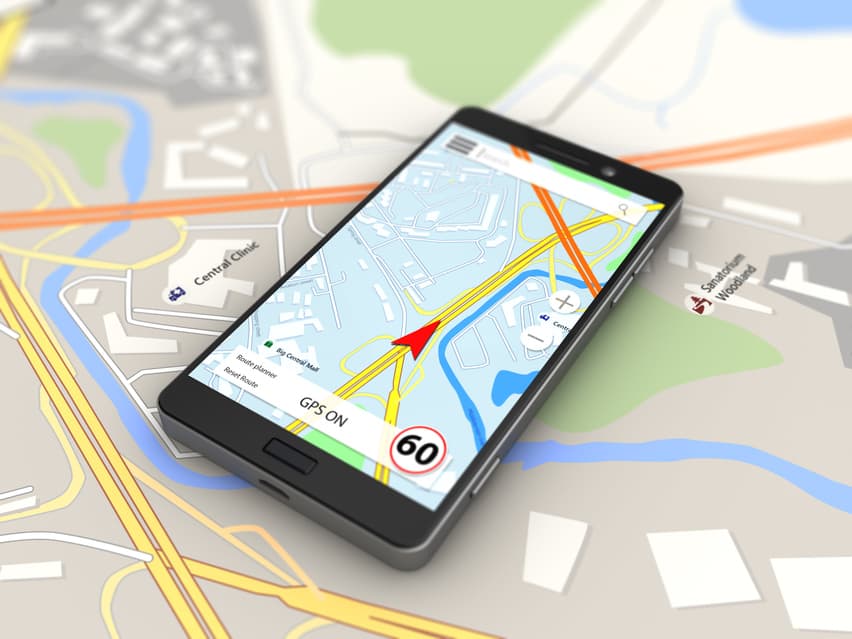4 June 2018 Concept Car
With all of the new safety technology, you’d expect car theft and car break-in numbers to be dropping. In reality, they have been steadily climbing for years. In 2014, the UK’s Office for National Statistics reported around 358.000 car thefts or instances of stolen valuables. As if that number wasn’t high enough, it has since then gone up by another 30%. Clearly, robbers appear to be staying one step – or more than one step ahead – of all protection efforts.
So should you simply resign yourself to the fact that, sooner or later, you’ll be a victim of car theft, too?
Far from it.
There is no such thing as perfect protection. But there are many things you can do to make things as hard as possible for criminals. As experience shows, quite often, that is already enough to scare potential thieves off and send them to a different vehicle,
In this guide, we’ll take a look at the very best tools and practises to protect yourself against break-ins. As you’ll soon discover, you can achieve excellent results without breaking the bank.
First, however, it makes sense to spend a little time thinking about the topic of car insurance. After all, why worry about your car being broken into, if your insurance covers everything anyway?
Unfortunately, the simple truth is that most drivers do not even remotely have adequate coverage. And even if you did, which is an expensive addition to your monthly standing charges, these insurances rarely cover more than factory installed features. For anything placed in the car by yourself, you won’t receive any compensation whatsoever.
If you take a look at the most frequently stolen items at car break-ins – laptops/Ipads, money/change, GPS, shopping packages, purses, stereos, briefcases – none of them falls into the pre-installed category. Which means you’d still have to pay for replacement out of your own pocket.
Expansive car theft insurance isn’t worth it most of the time. Which makes it even more important to start searching for measures to ward thieves off.
And whom better to ask about what works and what doesn’t than someone who’s actually talked the talk? In an intriguing feature, online blogger ‘TB’ shares insights from his criminal past as a car thief. These include the psychology behind break ins, the most desired items for a break in and the most effective protection measures.
We’ll share some of his findings over the course of this article, but wanted to already treat you to his two most important insights. These work as a sort of summary of your entire anti car break in approach:
“If you remember nothing else, remember these two things – (1) light is the criminal’s enemy. We hated light! Hated it! This makes light your friend. Park under street lights and park near motion sensor lights, and dumb little criminals like I was, will stay away. (2) 20 seconds. It only takes 20 seconds. Don’t ever forget that.”
If you had to forgo all other ideas shared in this article, therefore, you could still significantly reduce your risk of theft by simply making sure your car is parked at a well visible spot and in the light. Quite a reassuring insight, we feel.

If you want to do more than that, however, we can’t blame you. Car alarms are the obvious first choice. A car alarm is reasonably hard to disable and creates a truly ear-shattering noise when set off. Modern car alarms also feature motion sensors and knock sensors. They are capable of detecting someone opening the hood. And most of them will instantly report an attempt at a break-in to your smartphone.
Unfortunately, car alarms are still expensive and out of reach for many drivers. Thankfully, there are far cheaper alternatives available that can be almost as effective. Former car thief SB suggests that it is enough to ‘have a little blinking light that’s highly visible on your dashboard somewhere’. Since thieves can not be entirely sure whether you have a real alarm installed or just a dummy, there is a good chance they’ll spare your car.
If you’re considering this option, you may want to combine it with a suitable fake car alarm sticker on your window. In combination, this extremely cheap measure can be astoundingly effective.
One of the first things thieves learn is to not waste their time on potential problems. As we’ve gathered time really matters when it comes to car break-ins. And so, if a car does not look promising, there is a good chance they’ll simply move on to another.
This is why you should make absolutely sure to not leave any visible valuables in your vehicle at any time:
The suggestion to cover potentially alluring items with a blanket is questionable. Although thieves will not be able to see what you have in your car, they may still be tempted to take a look. If they need to smash your window to do so, this will still set you back several hundred Pounds.
Of course, even if you do your very best to protect the valuables inside your car, this still leaves the problem of valuables on the exterior of your car. The most well-known example of this are hood ornaments. It has become a popular sport for drunken students to forcefully rip these off expensive cars, turning them into costly replacement items.
But there is a far more worrying development than the theft of hood ornaments: Stealing catalytic converters.
This is not as strange as it may initially seem. Catalytic converters are not a particularly desirable item in themselves. They would hardly fetch a good price on the black market, if it wasn’t for one notable thing: They contain high amounts of the precious metals platinum, rhodium and palladium. This means they can be sold off to scrapyards at quite respectable prices.
For you as a car owner, the cost of having to replace a converter can be devastating. Although specific protection measures are available, the cheapest option is most likely to buy a good car alarm and set it to react to vibrations. This should set it off in case someone tries to remove the converter by force.
While these three approaches can work wonders when it comes to protecting your valuables, they will not save you from having your car stolen. So let’s now take a closer look at what you can do to avoid car theft.
Getting into a car is not that hard. Driving away with one which does not have a working steering wheel is quite a bit harder. Based on this strikingly simple thought, you can chose from a wide range of options to make life as hard as possible on thugs:
Steering wheel locks are a great idea. They will, however, not stop a truly determined thief. Brake locks are one version of potentially even more deterring alternatives. A brake lock is particularly effective. It is a metal construction that you place on top of your brakes and which is then fixed. With the brake lock installed, it is impossible to stop the car. And trying to remove it by cutting it will usually render the brakes defective.
Brake locks can be a tremendous help against car theft. There is one major disadvantage, though: They are a hassle to install and remove. In practise, therefore, many drivers simply cease to use them after a while.
Which is why kill switches are a far more popular device than brake locks. A kill switch is a remarkably inexpensive device which is triggered as soon as someone tries to start up the car without a key. As soon as the device notices an interference, it instantly ‘kills off’ one or several of the vehicle’s essential driving assets: Either cutting the electricity or fuel supply.
Kill switches are easily enabled and disabled by the owner. This means you’ll probably keep using them far more reliably than most other options. However, should they malfunction for any reason and initiate a break down while you’re starting up the car yourself, they can cause extremely expensive damage. Also, you won’t be able to use your car at all before it is repaired again.
If you’re looking for a less hazardous and still effective alternatice, thecheatsheet.com has an intriguing suggestion: Simply pull the plug:
“For those of us who are on a budget, and don’t want our precious classic stolen, a quick tug on a spark plug wire is often all that is needed. This cheat is great for those of us who park in urban areas, where thieves don’t have the luxury of having the time to peer under the hood to see what is the matter. No spark on a cylinder means the car will refuse to start, thus deterring any thief wanting to hotwire an older vehicle.”
Admittedly, this trick will not work with every car, since most current models use coil plugs, which can not be removed quite as easily.

Tracking devices are by far the most advanced and elegant solution to car break-ins. This is how they work: You install a GPS transmitter, which always informs you where your car is at a given moment. If your car is stolen, you can use the transmitter to tell you – and the police – exactly where it is. This makes it a lot easier to recover your vehicle.
If installed well, a transmitter can not be removed without causing considerable damage to the car. This is why many thieves these days have reverted to a tactic called ‘pinch and park’. It involves parking the stolen car at a safe spot for a few days to see if any action is taken by the police. If nothing happens, the car is then taken from the safe spot and drive off to be taken apart or sold off.
Although pinch and park is something to consider, tracking devices are still one of your very best options against car break ins and theft.
The great thing about all of the above mentioned solutions is that you do not need to use them all. Even one or two of them make for a great anti break in defence. And don’t forget: If all else fails, at least heed the advice of a former thief: Park your car in a well-lit space.
4 June 2018 Concept Car